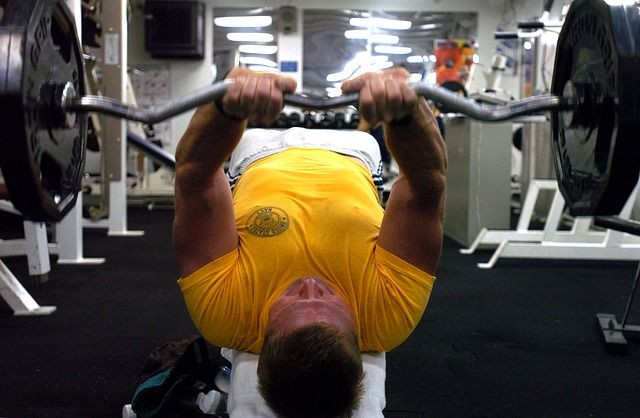Longer Rest Periods Build Muscles Bigger: 5 Minutes Between Exercises Is Best

How we treat our bodies before, during, and after a workout is just as important as the workout itself. While stretching, eating right, and even what time we workout may seem innocuous, they actually have a direct impact on our results. So can our rest periods.
Researchers from the University of Birmingham have found that shorter rest periods in between weight lifting sets can actually impair the processes that control muscle growth. If you want bigger muscles, then it’s time to start taking longer breaks.
"With short rests of one minute, though the hormonal response is superior, the actual muscle response is blunted,” said Dr Leigh Breen, from the University of Birmingham, in a statement. “If you're looking for maximised muscle growth with your training programme, a slightly longer interval between sets may provide a better chance of having the muscle response you're looking for."
Breen and his colleagues recruited 16 adult males who were asked to participate in resistance exercises. Each set of exercises was followed by either one minute or five minutes of rest. The researchers obtained muscle biopsies 0, 4, 24, and 28 hours after the workout, which were used to determine myofibrillar protein synthesis and intercellular signaling — common markers of muscle growth.
Participants in the five-minute rest group experienced a 152 percent increase in myofibrillar protein synthesis from resting levels compared to 76 percent among those in the one-minute rest group. Breen’s research team recommends that all beginners take at least two to three minutes between each set of weight lifting exercises to ensure optimal muscle growth.
"Over time, they may need to find ways to push beyond the plateau of muscle building that commonly occurs, and so may gradually decrease their rest periods,” Breen added. “For experienced lifters, it's possible that they may not experience the same blunted muscle building response to short rest intervals, particularly if they have trained this way for a prolonged period and adapted to this unique metabolic stress.”
So how does a longer rest period cause muscles to grow larger? As muscle fibers tear, our body sends out an inflammatory response to repair them. Repaired muscle fibers means larger muscle fibers. This is the cause of delayed onset muscle soreness, pain that begins to develop 12 to 24 hours after a workout. Although it is commonly mistaken for lactic acid accumulation, this type of soreness is actually a side effect of the repair process.
Longer rest periods aren’t the only way we can optimize our muscle growth during, before, and after a workout. Evidence has also shown that the number of reps can also affect the way we build muscle strength. If strength is your goal, then stick to heavier weight and one to five reps. Our diet before and after a workout also has an impact on how our muscles develop. That means going heavier on carbohydrates preworkout and protein postworkout.
Source: Taylor A, Philip A, Breen L, et al. Short Inter-Set Rest Blunts Resistance Exercise-Induced Increases in Myofibrillar Protein Synthesis and Intracellular Signaling in Young Males. Experimental Physiology. 2016.



























